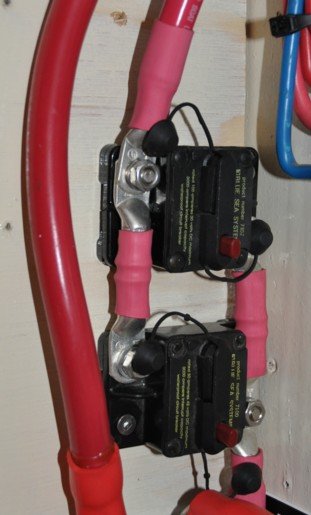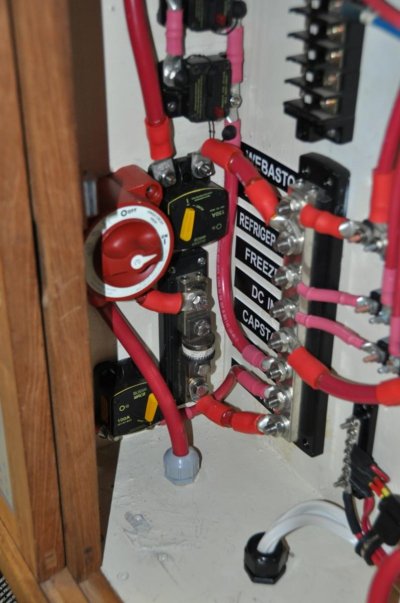JDCAVE
Guru
- Joined
- Apr 3, 2011
- Messages
- 2,902
- Location
- Canada
- Vessel Name
- Phoenix Hunter
- Vessel Make
- Kadey Krogen 42 (1985)
Why would the PO of the boat wire these two breakers "in-line"? The cabling on the bus-bar is labelled "capstan" which I presume is for the winches on the boat deck. One breaker is rated 100 amp and the other is rated 50 amps. The windlass has separate breaker.
Jim
Jim


